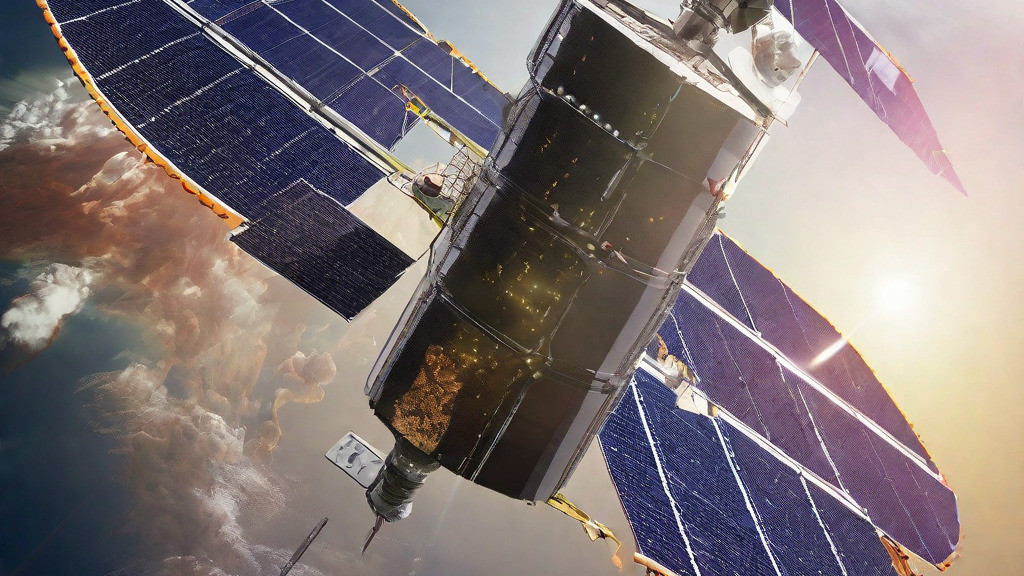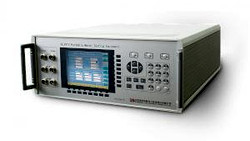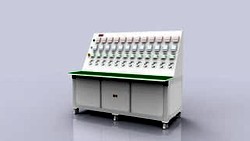Space-based solar power is a concept that has fascinated scientists and engineers for decades—harvesting the near-constant sunlight of space and transmitting its energy to Earth. While the technical and financial challenges have so far prevented full-scale development and deployment, recent advancements have reinvigorated discussion around the viability and potential of establishing a space-based solar power network. This article analyses the current state of the technology and research, considers some of the quantitative factors involved, and discusses ongoing efforts to advance space-based solar as a possible long-term energy solution.
How It Works
The basic concept is relatively straightforward. Specialized solar-collection satellites in low-Earth orbit would continuously beam energy to receivers on Earth. Each solar satellite would have extensive arrays to maximize sunlight exposure and conversion to electricity. Rather than storing energy onboard, the generated power would be converted to radio frequency (RF) microwaves and transmitted to receiving antennas on Earth, at frequencies that allow safe propagation through the atmosphere. At the Earth station, the microwave energy would be transformed back into electricity and fed into the grid.
Satellite Design Factors
A key factor in satellite design is achieving maximum solar collection per unit of mass placed in orbit. Modern thin-film solar cells can achieve significantly higher power-to-mass ratios compared to earlier generations. Engineers are also exploring novel concepts like solar sail collectors that could harvest energy both from the sun and Earth's magnetosphere. Still, the sheer scale required imposes practical limits – it has been estimated that a 1-gigawatt system may need over 100 satellites, each measuring several kilometres across. Material choice, assembly methods, and in-space manufacturing will be critical to lowering design and deployment costs. Structural dynamics are another consideration, as the delicate solar arrays must withstand launch vibrations and space environment stresses over decades of operation.
Wireless Power Transmission
Perhaps the most challenging aspect is transmitting power via focused microwave beams from the satellites to receiving stations on Earth. Extensive testing has validated the fundamental principles, but scaling prototypes up to the multi-megawatt levels required is still an active research area. Factors like transmission frequency, beam targeting accuracy, atmospheric interactions, and safety metrics all require further refinement. It may be necessary to establish ground facilities distributed across wide geographic areas to minimize risks and maximize the opportunity to utilize transmitted power. One promising option is phased arrays that can precisely control beam patterns and enable dynamic steering based on weather conditions or other factors.
Environmental and Regulatory Factors
Given the extensive scale and global nature of a space-based solar power network, addressing environmental and regulatory considerations is equally important. For example, thorough analysis and modelling would be needed to ensure microwave transmissions and possible satellite debris do not pose unacceptable risks to wildlife, aircraft, or other systems in space and on Earth. Regulations would likely need harmonizing between spacefaring nations to establish safety and orbital traffic standards. Engaging environmental groups and the public proactively could help maximize understanding and allay concerns. International agreements may be required to govern access to suitable orbital slots and cooperation around shared facilities. As with all large-scale infrastructure projects, widespread consensus building will be vital for long-term viability and acceptance.

(symbol image, credit CLOU)
Business and Economic Analysis
Even with technical hurdles surmounted, establishing a space-based solar industry would require massive upfront capital investments. Detailed business models and economic analyses are still in development, but recent studies indicate the total costs for a 1-gigawatt system capable of delivering baseload power could range between $10-20 billion. While costs are projected to decline as the technology matures, long payback periods in the 20-30 year range would require public-private partnerships or novel financing mechanisms for projects of this magnitude. Establishing effective mass production processes for modular satellite components could help significantly reduce per-unit costs. International cooperation and market aggregation may also improve economics through shared development costs and scaled deployment opportunities across borders.
Takeaway
Space-based solar power is an ambitious long-term concept that, if successful, could play a meaningful role in humanity's transition to renewable global energy systems. While present technological and economic limitations remain, steady progress is being made to address each critical element through ongoing collaboration between government agencies, private companies, and academic researchers worldwide. Upcoming milestones like the planned low-Earth orbit demonstration missions in the next 5–10 years should provide invaluable insights to help refine designs and lower uncertainties. With continued investment and momentum building, the vision of receiving clean, inexhaustible solar power beamed from satellites may eventually become reality in the mid to late part of this century. For now, space-based solar remains an active field with significant potential that warrants ongoing study and development.
Several nations, including Japan, China, and India, have recognized the potential of SBSP and have ongoing research programs dedicated to exploring its concepts and technologies. While no commercial systems have been deployed yet, the continued interest and investment in SBSP highlight its significance as a potential future energy solution.
With the energy sector's eyes on the upcoming low-Earth orbit demonstration missions, CLOU stands prepared to meet the sector's evolving needs with our durable energy storage and distribution technology.
For further details on CLOU's energy storage solutions and how they can support your actual or future space-based solar power projects, our team is ready to assist. Your insights and feedback are invaluable to us.
Thank you for reading, and until next time, let's keep harnessing the power of innovation!






All comments are moderated before being published. Inappropriate or off-topic comments may not be approved.